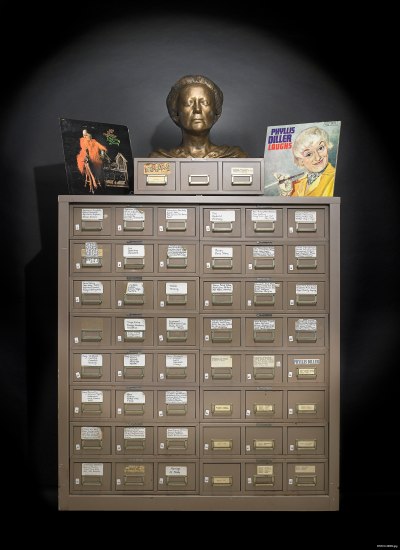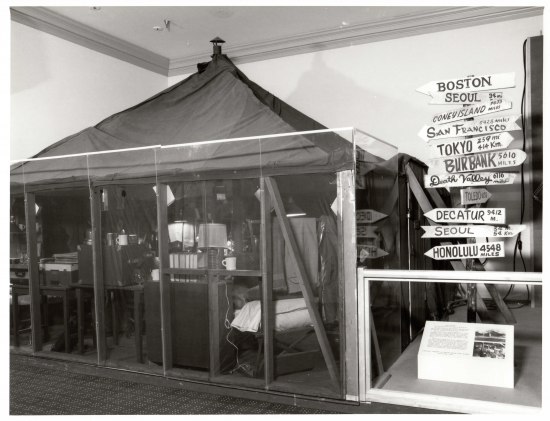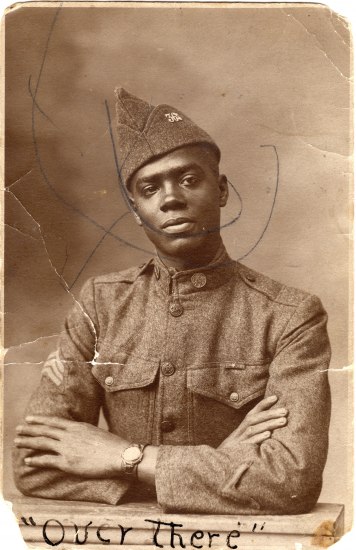Making History: The 10 most-read blog posts of 2017 from the American History Museum
2017 was an incredible year for the American History Museum’s blog, “O Say Can You See?” More than a few of the most-read posts focused on how the museum continues to grow with new exhibitions, new staff, and new collections. Several of the year’s most popular stories were about projects that depended on public participation—everything from transcribing jokes in Phyllis Diller’s gag file to donating money to conserve the Ruby Slippers.
Help us transcribe Phyllis Diller’s jokes—and enjoy some laughs along the way!

Phyllis Diller used this gag file throughout her career to organize and store her jokes. The drawers are filed into categories based on the subject of the jokes inside.
We asked, and you answered! In 2017, digital volunteers from around the world helped the museum transcribe all 52,569 notecards in Phyllis Diller’s gag file—a 51-drawer card catalog in which the legendary comedian kept her jokes meticulously organized. The jokes are now fully searchable through the Smithsonian Transcription Center’s website, giving us a whole new window into the history of American comedy.
Who tells Eliza’s story? Philanthropy and Hamilton: An American Musical

Together these artifacts–a portrait of Eliza Hamilton and the suit Lin-Manuel Miranda wore to portray her husband–connect 200 years of philanthropy history.
One of this year’s highlights was the donation of two objects that connect over 200 years of philanthropy history. The first: a portrait of Elizabeth Schuyler Hamilton that once hung in the orphanage she helped found and lead. The second: a green suit from the Broadway hit Hamilton: An American Musical. Designed by Tony award-winning costume designer Paul Tazewell, Lin-Manuel Miranda wears the suit as Alexander Hamilton in the musical’s second act. The cast and crew of Hamilton not only sang about philanthropy, but supported the organization Eliza Hamilton helped found. (Sidenote for Hamilton fans: the suit will briefly be on display at the museum starting March 22, 2018, through late spring.)
The continuing tradition: The Smithsonian receives Mrs. Trump’s inaugural gown
In October, curator Lisa Kathleen Graddy used the occasion of the museum collecting First Lady Melania Trump’s 2017 inaugural ball gown to look back at the history of the museum’s First Ladies exhibition—how it began and how it continues to change.
While the Ruby Slippers step out, two swashbuckling props step in

This hat, used in the making of the “Indiana Jones” films, will be on display on the museum’s second floor “American Stories” exhibition while the Ruby Slippers undergo conservation treatment. Gift of Harrison Ford and Lucasfilm Ltd.
Last year, people from around the world helped the museum raise money to conserve the Ruby Slippers. This year, the slippers went off display so that they could undergo an in-depth conservation assessment and treatment before being placed in a new state-of-the-art case—work that will keep the Ruby Slippers sparkling for generations to come. In the meantime, the slippers’ usual spot in the museum is being filled with two other iconic objects from film history, Indiana Jones’s bullwhip and hat.
10 things to know about exhibition installation

Installing exhibitions–in this case torches from camapign parades in the 1800s–can require a fair bit of flexibility.
New exhibitions at our museum take years to plan and build, and much of the work is done behind the scenes. If you’ve ever wondered what goes into installing an exhibition, look no further than this post.
Contemporary collecting: Creepy costumes and props from The Walking Dead join our collection

Since the show’s objects are not currently on display, this zombie prop from “The Walking Dead” (known as “Bicycle Girl”) might inspire our collections managers to leave the lights on at all times.
Look out—there’s a zombie in our collections! This fall, the museum collected a group of objects from the hit TV show The Walking Dead. This post gives readers a quick (if somewhat gruesome) tour through what was collected, which ranged from a costume katana to a fake severed head.
The day I decided not to collect: A curator’s view of Ground Zero

Our curator’s photographs from Ground Zero are just a few of the hundreds of objects and images connected to 9/11 that are a part of the museum’s collections.
In this poignant post, curator Jane Rogers reflected on visiting Ground Zero in New York City just a month after the terrorist attacks of 9/11. Although she chose not to collect any materials from the hundreds of workers and rescue personnel she saw, Rogers did document her visit with her camera. Today, her photos and recollections provide us an additional perspective on one of our nation’s greatest tragedies.
Looking back on M*A*S*H, the show and the exhibition

The museum’s collections include two complete sets from the show “M*A*S*H.” This photo shows the exterior of “The Swamp” set as well as the iconic direction sign, on display in the museum.
2017 was the 45th anniversary of the debut of M*A*S*H, one of the most influential shows in television history. Volunteer Lucy Harvey’s post looked back on how many artifacts from the show became part of the museum’s collection, as well as how an exhibition about M*A*S*H brought record-breaking crowds to the museum.
Three questions for a brewing historian

Brewing historian Theresa McCulla joined the staff of the National Museum of American History in 2017
This year, Theresa McCulla became the museum’s new brewing historian. As part of the our ongoing American Brewing History Initiative, McCulla will be leading our efforts to collect, document, and preserve the history of brewing, craft brewers, and the beer industry. If you’ve ever wondered what beer can tell us about American history, read this interview!
Over There: A Buffalo Soldier in World War I
As the museum commemorates the 100th anniversary of World War I, we looked back at the life and military career of Corporal Benjamin Blayton, who served in the U.S. Army as part of the 365th Infantry Regiment, 92nd Division “Buffalo Soldiers.” During the war, prejudices of the era prevented most African American units from participating in combat with the American or British forces. However, a few units, including the 92nd, served in combat with the French Army. Blayton served in France from June 1918 until February 1919, and he was later awarded the World War I Victory Medal with Meuse-Argonne and Defensive Sector battle clasps for his service.
Jordan Grant is a Digital Experience assistant in the museum’s Office of Audience Engagement. This post was originally published by the American History Museum’s blog, O Say Can You See?
Posted: 18 December 2017
-
Categories:
American History Museum , Feature Stories , History and Culture





